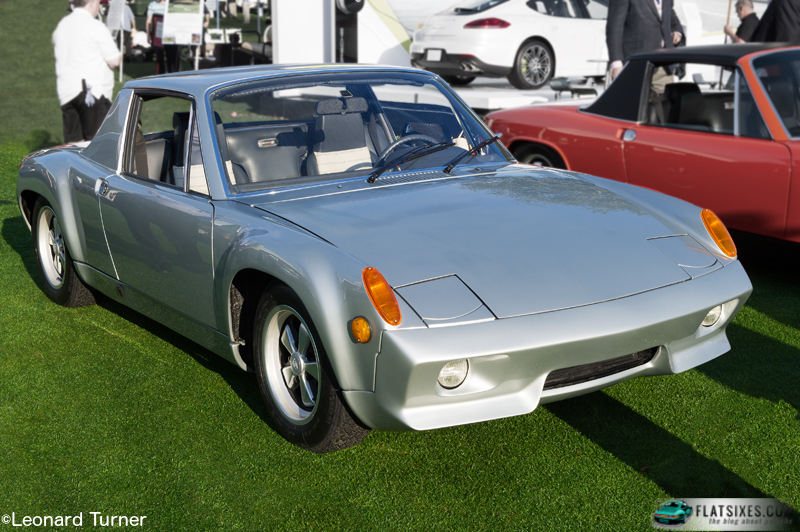916: Last Variation On The Mid-Engine Roadster
Inspired by the success of the 914/6 GT, Ferdinand Piëch determined to create one last variation on the mid-engine roadster, this time a super street model to compete with the Dino Ferrari in the luxury GT market. In short order, chief stylist Tony Lapine and his design crew produced a strikingly handsome elaboration on the 914 concept, featuring the prominent fender bulges of the 914/6 GT, now smoothly flared in steel. Color matched fiberglass bumpers and sills added to the aggressive stance of what was to be called the 916.
Several measures were taken to beef up the chassis, including the replacement of the normal fiberglass removable roof with a welded steel structure. Part of the reason for the chassis strengthening was the 916’s full 911S drivetrain including its 2.4-liter powerplant tuned to pump out 190 horsepower at 6500 rpm. Seven-inch rims, ventilated disc brakes on all four wheels, and Bilstein competition shocks were part of the racy package while the interior featured colorful upholstery, velour carpeting and leather trim. An initial series of 20 cars was planned but only 11 were ever built.

The Porsche 916 was the final variation on the 914 theme. Intended as a super street model to compete with the Dino Ferrari, the 916 had a full 911S drivetrain and luxe interior fittings, but the project was cancelled just before its debut at Paris in 1971. Only 11 were ever completed.
Just before the Paris Auto Show in the fall of 1971, where the 916 was expected to make its debut, the project was cancelled. The algorithms of price, volume and profitability could not be made to sum favorably and it did not escape notice in the corridors of Werks I that the 916 would have cost more than the most expensive 911 of the time. Five of the completed 916s were bought by members of the Porsche and Piëch families. Peter Gregg obtained one and the others were sold off to close friends.
Such was also the fate of the 914/6. The following year, lack of demand and the slim profit margin that had plagued it from the beginning made the demise of the 914/6 inevitable. In 1972, nominally the final year of production, no six-cylinder roadsters were imported into the United States and it quietly disappeared worldwide.
Four-Cylinder 914 Gains Traction
Its four-cylinder sibling, however, was finally gaining traction with a Porsche-redesigned two-liter engine lending credence to the claim that it offered near 914/6 performance at a greatly reduced price. By 1976, the last year of 914 production, Porsche’s mid-engined roadster was widely regarded as the outstanding combination of performance, handling, fuel economy, and, above all, driving fun that its designers at Porsche had intended from the start.

“No one could have guessed that the single 914/6 GT at Le Mans in 1970 would finish a stunning sixth overall, completing the entire 24 hours without changing tires or brake pads.”
Today, the lean, functional style of the 914 is controversial no longer. Its pedigree as a true Porsche no longer fuels arguments among purists. Like so many of its Porsche brethren, the 914, particularly in its six-cylinder GT form, proved itself many times over. And it did so in the great arenas where all real Porsches are tested and earn their chops—the great race tracks of the world.
About The Author: Betty Jo Turner is a freelance writer specializing in Porsche. For 43 years she was the editor-in-chief of Porsche Panorama, the magazine of the Porsche Club of America, retiring from that position at the end of 2012. She was named a grand marshal of Porsche’s Rennsport Reunion III and has written for Christophorus and other periodicals as well as participated in book projects on the subject of Porsche.
[Courtesy of the Amelia Island Concours d’Elegance – This story first appeared in the printed program for the 20th Amelia Isand Concours d’Elegance and is used here with their very gracious permission.]
